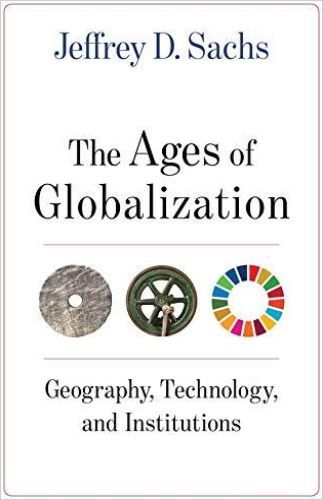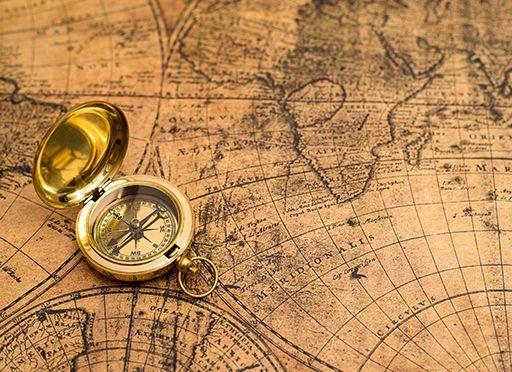Columbia University professor and prolific author Jeffrey D. Sachs offers a detailed overview of the development, sustenance and consequences of global trade.

The History of Trade
Through the arc of human history, globalization has produced good and ill, professor and director of the Center for Sustainable Development at Columbia University Jeffrey D. Sachs writes in this astute study. Travel and trade started with migrations from Africa to Europe and Asia, Sachs explains, and globalization has accelerated ever since. He finds that cross-cultural linkages gave humanity the written word, widespread prosperity and countless YouTube videos. But it also spawned slavery, war and vast damage to the planet.
Kirkus Reviews found this “an authoritative account of our shared, increasingly interdependent human journey.” Foreign Affairs noted that “Sachs makes a powerful case that the globalizing forces creating our increasingly interdependent world are deeply rooted in the human condition and…are here to stay.” And Ian Goldin, co-author of Age of Discovery, said Sachs “provides an unparalleled explanation of human development.”
Globalization
Sachs tells how for 70,000 years, people have communicated, traveled and traded across cultures and borders, leading to complex societies, efficient economies and thorny problems. Globalization, he argues, allowed people to flourish, but humans threaten their home planet and bloody competition has accompanied the cooperation inherent in human advances.
Paleolithic Age
Sachs begins by dating the first wave of globalization to 50,000 to 70,000 years ago, when Homo sapiens migrated from Africa into Asia and Europe.
We can be our own worst enemy, or at least our cousins’ worst enemy. Jeffrey D Sachs
Humans, Sachs relates, developed egalitarian societies as male leaders gained dominance through social finesse, not brutality. Early humans proved effective hunters; so effective, he laments, that they hunted some animals to extinction. Globalization, Sachs reminds you, has always featured people harming their surroundings.
Neolithic Age
Early humans, Sachs summarizes, were wanderers, but people who stayed in one place created art and written language. Expanding agrarian communities allowed their societies, the author details, to grow prosperous. And, he posits, people created pictograms and hieroglyphics from 3500 to 3100 BCE, the end of the Neolithic period.
Equestrian Age
Mastering the horse proved, Sachs submits, the significant technological advance of the Equestrian Age – 3000 to 1000 BCE. He references people first taming animals in the Paleolithic age in China, when humans befriended dogs. But, he surprisingly recounts, domestication was exclusive to Europe and Asia; African and American societies didn’t harness animals.
The horse is unmatched in its importance for economic development and globalization.Jeffrey D Sachs
Horses, Sachs marvels, offered speed, stamina and utility. He tracks how Goths, Huns and Mongols used horses to conquer territory from 1400 BCE to 600 CE. This era, he reports, brought the rise of cities – more than two dozen urban centers with populations of more than 10,000 each emerged.
Classical Age
Sachs breaks down how, from 1000 BCE to 1500 CE, societies in Persia, Greece, Rome, India and China arose, as Judaism, Christianity, Islam and Buddhism developed. Written languages meant the recording and sharing of knowledge. Sachs cites the philosophy of Plato and Aristotle; Persia offered Zoroastrianism, a world view that pitted good against evil, while Judaism and Christianity questioned meaning and morals. Sachs lists China’s Han Empire as offering advances in mathematics, wrought iron, ship rudders and seismometers.
Ocean Age
From 1500 to 1800, Sachs relates how European powers conquered the seas. Spain, Portugal, Britain and the Netherlands colonized huge parts of the world, but they also carried smallpox to the Americas. Europeans, the author says, brought back malaria, yellow fever and syphilis. Sachs credits the Ocean Age with the invention of global capitalism; growers – often using enslaved people – produced tobacco, sugar and cotton in the hinterlands for consumption abroad.
Instead of China circling the Cape of Good Hope en route to Europe, it was European powers that circled the Cape of Good Hope en route to Asia. Jeffrey D. Sachs
Sachs estimates that the population of indigenous peoples in the Americas plummeted by 90% – from 60.5 million in 1500 to 6.1 million in 1600. Sachs explains that the US economy so depended on enslavement that only a war ended it. The author expresses outrage that global capitalists who enslaved millions escaped any punishment.
Industrial Age
Sachs explains that, by the end of the Industrial Age, which lasted from 1800 to 2000, nearly half the world’s population had moved to cities and enjoyed widespread prosperity. He paints the steam engine as the basis of this new era.
While the steam engine is not solely responsible for economic modernity, without the steam engine most of the other technological breakthroughs of the past two centuries would not have been possible. Jeffrey D. Sachs
Steam engines needed energy, and Britain, Sachs notes, had coal reserves and a coal industry. Manufacturers adopted steam power, and Britain enjoyed a wave of innovation unleashed by the new technology. Britain and the United States led the global economic boom and, Sachs shows, English became the global language of politics, finance and science.
Digital Age
Sachs finds the speed of digital advances terrifying. He expresses hopes that technology might end poverty and income inequality, but he finds instead that the Digital Age has worsened both.
The uptake of digital technologies is the fastest technological change in history. Jeffrey D. Sachs
Sachs ticks off Digital Age threats: workers lose jobs to self-driving cars and trucks, warehouse robots and automation; the burning of fossil fuels warms the Earth; pollution threatens air and oceans as biodiversity decreases.
Worthy Overview
Sachs provides a summary of vast scope and detail, showcasing his superb writing and at times incredible breadth and depth of knowledge. For all the book’s length, however, Sachs proves not overly proud of what he knows. At times, he condenses his knowledge, and that proves a sound tactic. Sachs wants you to gain new understanding and – crucially – to link the disparate eras and activities he describes. By never overwhelming readers with data, he makes this possible.
Jeffrey D. Sachs’s other books include Building the New American Economy; A New Foreign Policy; The End of Poverty; Common Wealth; To Move the World; and The Price of Civilization.










